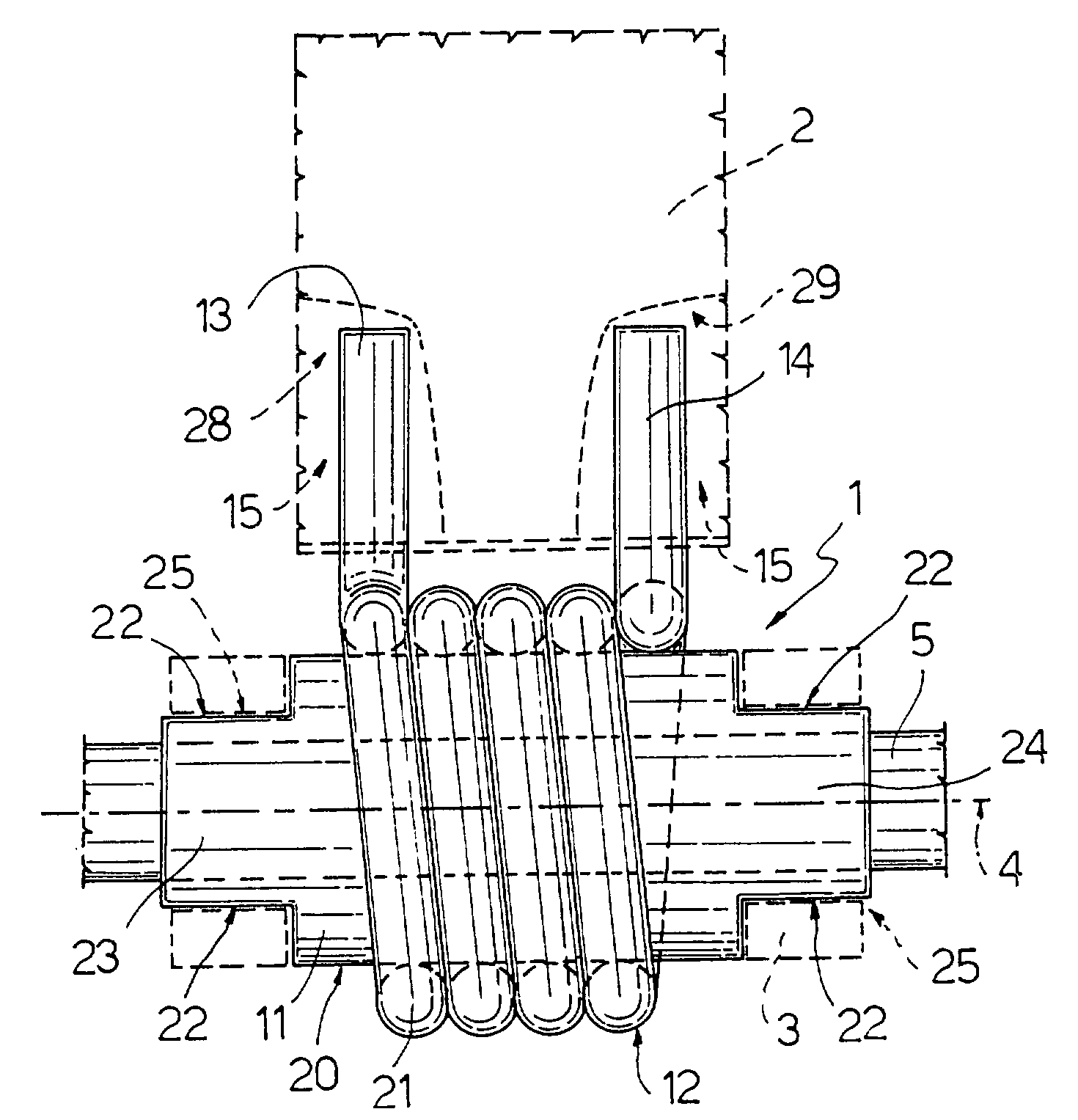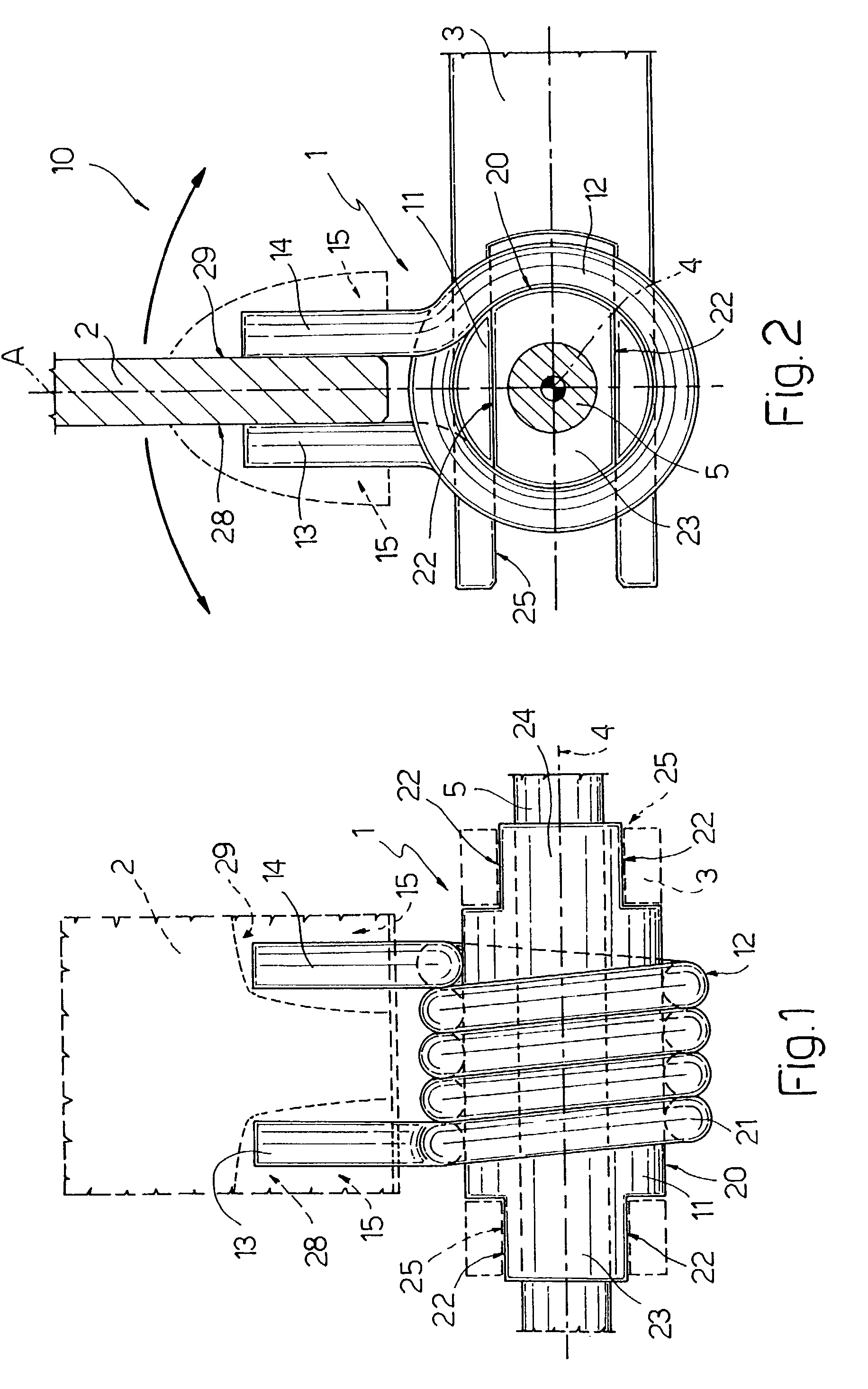Hinge retarding device such as for vehicle glove compartment lids
- Summary
- Abstract
- Description
- Claims
- Application Information
AI Technical Summary
Benefits of technology
Problems solved by technology
Method used
Image
Examples
Embodiment Construction
[0017]Retarding device 1 in FIGS. 1 and 2 is insertable between two members 2, 3 connected to rotate relatively about a hinge axis 4, and which, as will be seen, opposes and so retards rotation of the members in a predetermined manner. Members 2, 3 may be any two members movable with respect to each other, e.g., a lid closing an access opening (e.g., to a vehicle glove compartment) and a post defining said opening, or may form part of a hinge device 10 (FIG. 2) hinging the members and integrated with retarding device 1, in which case, members 2, 3 are defined by two half-hinges (e.g., a movable and a fixed half-hinge) connected by a pin 5 to rotate about hinge 15 axis 4.
[0018]According to the invention, device 1 comprises a support 11 carried integrally by one of members 2, 3 (in the example shown, member 3) and is substantially coaxial with hinge axis 4. A coil spring 12 is interference fitted to support 11 and terminates with two opposite radial arms 13, 14 projecting towards the ...
PUM
 Login to View More
Login to View More Abstract
Description
Claims
Application Information
 Login to View More
Login to View More - R&D
- Intellectual Property
- Life Sciences
- Materials
- Tech Scout
- Unparalleled Data Quality
- Higher Quality Content
- 60% Fewer Hallucinations
Browse by: Latest US Patents, China's latest patents, Technical Efficacy Thesaurus, Application Domain, Technology Topic, Popular Technical Reports.
© 2025 PatSnap. All rights reserved.Legal|Privacy policy|Modern Slavery Act Transparency Statement|Sitemap|About US| Contact US: help@patsnap.com


